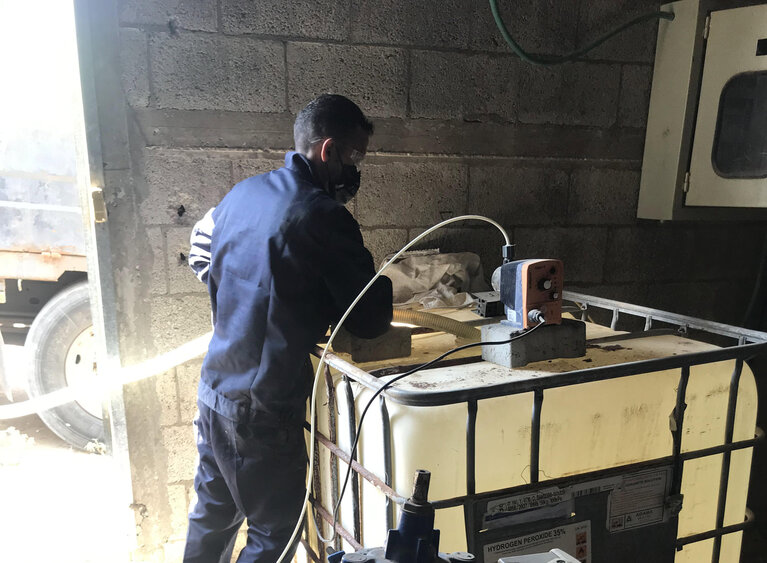Reconnecting water, restoring lives
An occupied Palestinian territory Humanitarian Fund success story
Basma and her family can breathe now; they are no longer exposed to the unbearable smell of sewage accumulating in front of their home. Similarly, they no longer struggle to access safe drinking water.
They live in Beit Lahia, in the Gaza Strip, where their situation deteriorated significanlty during the 11 days of escalated hostilities, in May 2021. Beyond deaths and injuries, the fighting severely damaged civilian infrustructure, including water and sewage networks.
“These were dreadful days,” Basma recalls, “especially the day where bombing was particularly heavy in our area. We were frightened. The next day, we found that the bombing had destroyed most infrastructure in our neighborhood.”
More than 1.2 million Palestinians have had their access to water, sanitation and hygiene services constrained due to infrastructure damage during the May 2021 escalation. “Sewage accumulated next door,” Basma continued. “It was caused by damage to the network. It poisoned the air that we breathe and attracted mosquitoes; it was awful.”
Even before the fighting, more than 97 per cent of the coastal aquifer, Gaza’s underground water source, was deemed unfit for human consumption due to unsafe pumping and wastewater contamination. “We struggled daily to secure domestic water,” Basma recalls. “Many times, we had to buy expensive water for drinking, washing and cleaning,” she adds, aluding to bottled or tankered water often availed of when piped water is unavailable or to avoid it because it is unsafe. “It overwhelmed us financially and physically.”
Immediately after the ceasefire, with support from the occupied Palestinian territory Humanitarian Fund (OPT HF), Oxfam and its partners were racing against time to fix networks, so that people can access safe water and to prevent sewage hazards. Oxfam indicated that Palestinians in Gaza had expressed their concerns about the health consequences of water shortages, especially during COVID-19.
Shortly thereafter, new pipes, fittings, concrete maintenance holes, and tiles were installed in multiple areas of the war-torn Gaza strip. Basma expressed her gratification: “The moment we saw that the machinery starting fixing the networks, we were relived; we were finally rescued. I no longer worry that my grandchildren would catch diseases because of the sewage.”
Additionally, chlorine solutions were provided for two months to disinfect the water of 286 wells serving more than 400,000 people. “The water supply is much better than before the destruction,” Basma concludes. “I don’t need even to run the water pump, which saves a lot on the electricity bill.”
* Basma’s name has been changed to protect her privacy.











